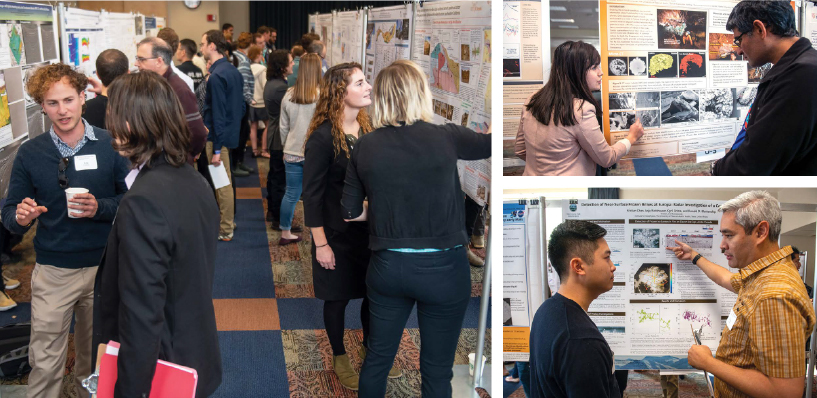Student Research Symposium Awards
November 12, 2020

In February 2020, the Jackson School’s Graduate Student Executive Committee hosted its 9th Annual Research Symposium. Winners and honorable mentions are as follows:
LATE-CAREER PH.D. STUDENT
1st Place: Chelsea Mackaman-Lofland: Kinematic development and structural architecture of the southern Central Andean fold-thrust belt (31-33°S): implications for Andean deformation modes and driving mechanisms
2nd Place: Brandon Shuck: Strike-Slip Enables Subduction Initiation Beneath a Failed Rift: New Seismic Constraints from Puysegur Margin, New Zealand
Honorable Mention: Sophie Goliber: Characterizing buoyant conditions of marine-terminating glaciers in West Greenland
LATE-CAREER MASTER’S STUDENT
1st Place: Esben Pedersen: Recovery After Ocean Anoxic Events: A Closer Look at the Carbonate Factory Response Preserved in The Pearsall Formation in Central Texas Following OAE 1
2nd Place: Micaela Pedrazas Hinojos: Ice-free beaches and lagoon sediment in the Arctic coast
Honorable Mention: Samuel Robbins: Constraining the tectono-thermal evolution of the Egyptian Red Sea margin: linking observations from the proximal to the hyperextended rift domain
EARLY-CAREER GRADUATE STUDENT
1st Place: Michelle Tebolt: The Geometry of Fan Features on Mars
2nd Place: Cole Speed: Linking Geomorphology and Stratigraphy at an Ancient Fluvial Avulsion Node: An example from the Cretaceous Cedar Mountain Formation, Eastern Utah, USA
Honorable Mention: Ethan Conrad: Plexiglass melt during rotaryshear experiments as an analog of pseudotachylite formation
UNDERGRADUATE STUDENT
1st Place: Carole Lakrout: Biotic Influence on Speleothem Morphology
2nd Place: Ryan Herring: Deducing the Timing and Magnitude of Late Quaternary Mississippi River Deltaic Progradation and Retrogradation Coeval with the Waning Phase of the Last Glacio-eustatic Cycle by Modeling Volumetric Flooding Rate and Sediment Discharge Since the Cessation of the Late Wisconsin Glacial Stage
Honorable Mention: Anthony Edgington: Stratigraphic Architecture and Provenance of the Cretaceous Cerro Barcino Formation, Patagonian Broken Foreland Basin, Southern Argentina
BEST REPRESENTED RESEARCH GROUP
1st Place: David Mohrig Research Group
2nd Place: Daniella Rempe Research Group
Back to the Newsletter